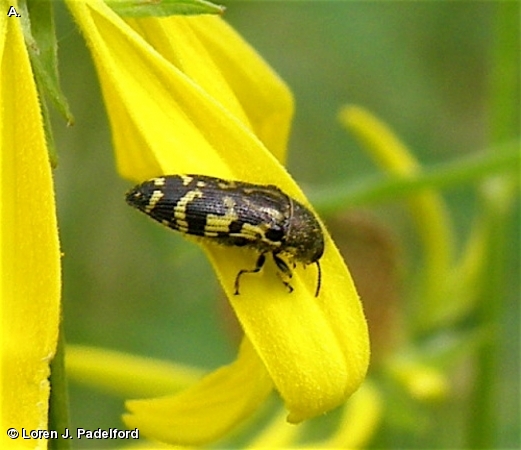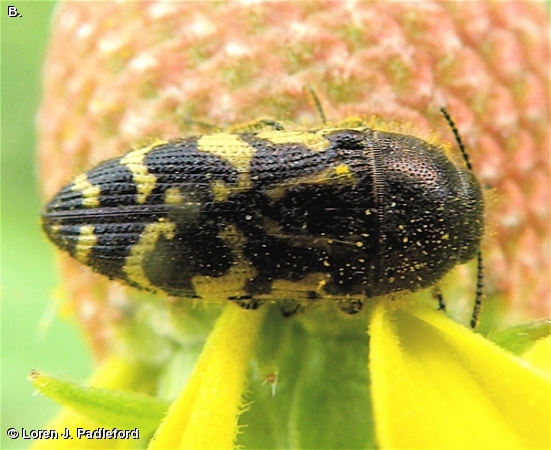
This beetle is about 1/3-1/2 inch long. It is marked with contrasting variegated patterns of yellow and black. There is also a large yellow spot on the edge of the elytra. Beetles of this family are elongate, usually parallel sided with a hard body. The antenna are short and threadlike. It is generally quite alert and fast moving. This beetle was identified with the help of experts at Bugguide.net.
This species has a marked preference for yellow flowers, to allow it to use its camouflage to full advantage. Look for it on wild Sunflowers or Black-eyed Susans, or on other yellow flowers. Its exact occurrence at Fontenelle Forest is not known but we would expect it to be common. This one was found at Camp Brewster in July. Adults are most active in sunlight on trunks, limbs, leaves and flowers. All larvae are plant feeders and most bore in wood. They do the most damage by feeding in sapwood of recently downed logs.
This beetle is also known as the yellow-marked buprestid beetle. This genus has more than 140 species in the United States and Canada, but most are found in the southwestern United States. Many members of this genus are hairy bee and wasp mimics. The most strikingly patterned one is the species shown here, Acmaeodera pulchella. Buprestid beetles are similar to click beetles, but without the “click” mechanism. Buprestid larvae are called “flatheaded borers”. They live in bark, wood, and sometimes the leaves of various plants.
Disclaimer: The content of NatureSearch is provided by dedicated volunteer Naturalists of Fontenelle Forest who strive to provide the most accurate information available. Contributors of the images retain their copyrights. The point of contact for this page is: Eric Scholar.


